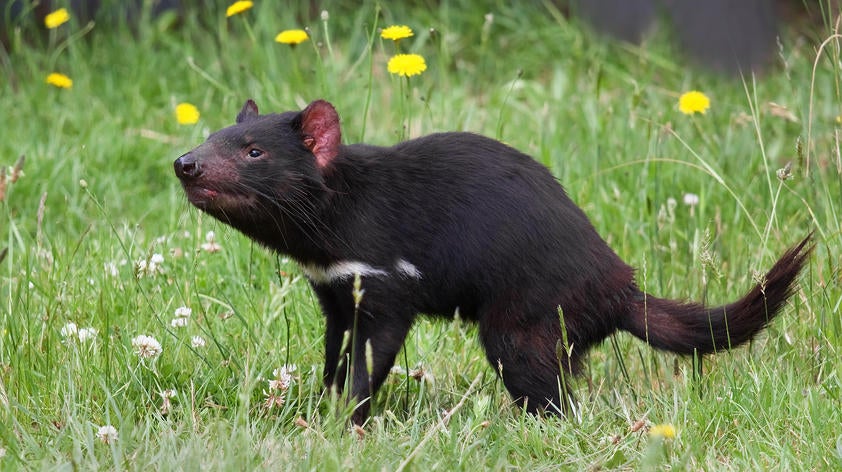
Part 4: A conservation geneticist’s call to keep studying cancer in wildlife
Part 4 of 4: Contagious cancers
You may be wondering what a contagious cancer is and if it’s the same thing as a cancer caused by bacteria or viruses. Well, it’s not the same thing. Contagious cancers are when the cancer cells from one individual pass to another individual and begin to replicate and grow. Contagious cancer may sound like something out of the most recent science fiction horror film, but it is a real threat to some wild animals.
Luckily, contagious cancers do not happen in humans!
The world's largest carnivorous marsupial, the Tasmanian devil, faces extinction from a cancer known as devil facial tumor disease (DFTD). DFTD is a contagious cancer, so cancer cells transfer from one individual to another individual when devils bite each while fighting over food or mates. Once the cancer cells develop into a tumor, the cancer kills that individual within six months to one year.
Currently, about 80% of all the devils have perished and the species could go extinct.
However, some devils are now showing signs of being able to fight the disease. Scientists have found that some individuals with the cancer don’t die. In fact, their tumors regressed partially, and in some cases, tumors regressed completely. Tumor regression is very rare and scientists aren’t sure what causes it, but are working to figure it out to cure these wonderful animals of this horrible disease.
This wraps up my look into the causes of cancers and examples in wild populations, but I leave you with a way forward.
As we look to the future, Franklin D. Roosevelt said it best: "Men and nature must work hand in hand. The throwing out of balance of the resources of nature throws out of balance also the lives of men.” Wildlife populations act as the canary in the coal mine – they are important indicators of environmental disharmony. Understanding the connected factors leading to this disharmony will help with our goal of the protection and conservation of wildlife.
Our ability to identify, assess, and mitigate the risks for cancer development in wildlife populations are crucial to the conservation of animals, wild places, and potentially human health.
Due to the complexity of each species, the type of cancer afflicting them, and their environment, each case requires nuanced management plans. There are several ways scientist can help.
First, monitoring water quality may lead to the need for stricter environmental contaminant regulations in some cases.
Second, active management, such as vaccinating as many individuals as possible, may be necessary.
Third, genetic assessments can be done to determine if larger population sizes are needed to buffer against detrimental effects of these diseases. This is where my research and that of the conservation genetics team comes into place.
These steps and more are important to consider before taking an animal with high cancer rates off the endangered species list.
Despite all these complexities, we must remember that we live in great time of tremendous opportunity - the opportunity for achieving advances in our understanding of wildlife and ecosystem health that will contribute to creating a healthier planet for us all to live on.













